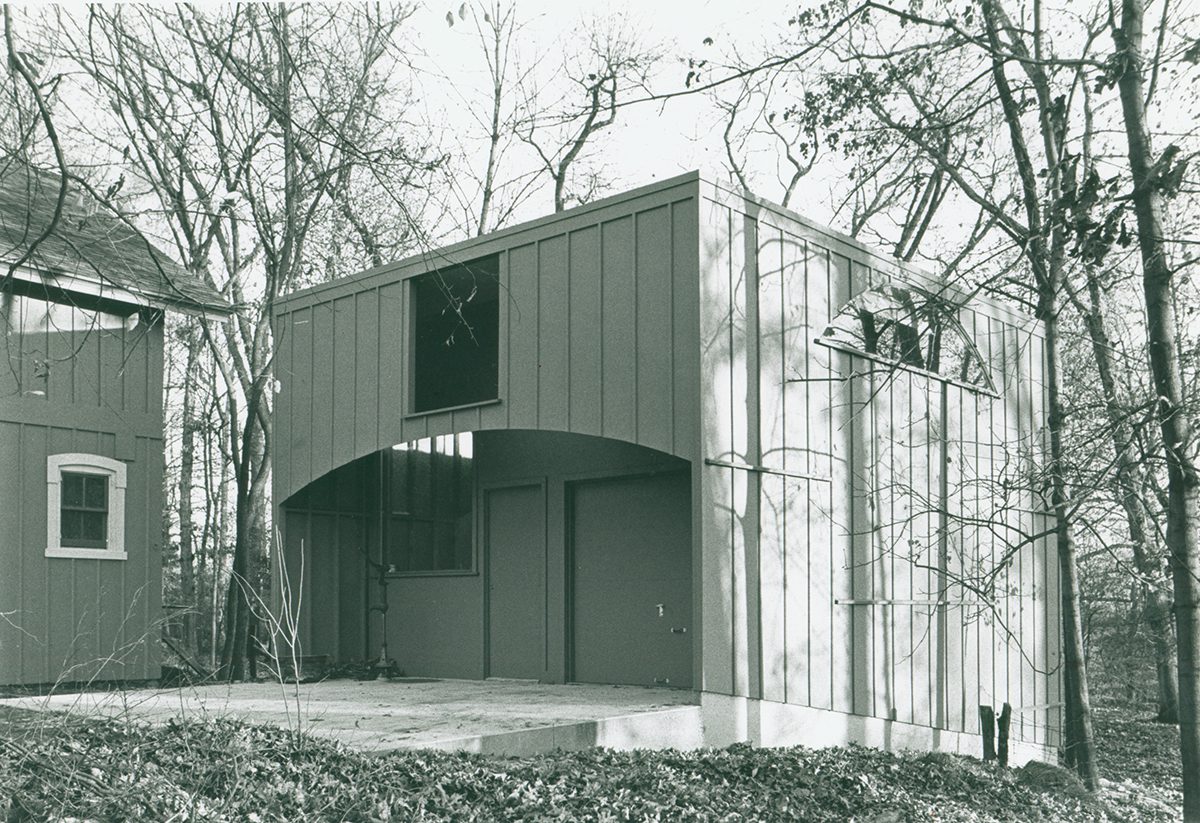A new appraisal of Robert Venturi’s gentle manifesto shows a welcome re-engagement with his work and thought, says Charles Holland

‘The Difficult Whole: A Reference Book on Robert Venturi, John Rauch and Denise Scott Brown’
eds. Kersten Geers, Jelena Pančevac and Andrea Zanderigo
Park Books, 216pp, £35
Fifty years have passed since the publication of ‘Complexity and Contradiction in Architecture’, Robert Venturi’s “gentle manifesto”. Since then the Postmodern architecture that it supposedly prefigured has passed in and out of fashion. Now pomo stands on the brink of fashionability once again, its tropes popping up in architecture magazines and student projects.
Despite this, it remains a remarkably reviled style, one invariably linked to the commercial bombast and reactionary politics of the 1980s. Venturi himself disowned it, claiming instead to be a classicist, modernist or mannerist at various points in his career. For all the subtlety and sophistication of its insights, ‘Complexity and Contradiction’ remains a curiously divisive book.
There have a been a number of events marking its half-century, and now comes ‘The Difficult Whole’, a book about the book. The new publication forms part of a series emanating from the studio that the editors teach at EPFL Lausanne, and thus sits somewhere between a history and theory seminar and a project in its own right.
Its title comes from a key chapter in ‘Complexity and Contradiction’ called ‘The Obligation Towards the Difficult Whole’. For the authors this concept is fundamental to Venturi’s design method and emblematic of his entire career. The combination of elements that do not sit happily together, of high and low culture and – ultimately – of complexity and contradiction, can be seen as the problem facing architecture in general. How does the formation of an a-priori critical position come to terms with the inevitable contingencies of being an architect?
Top: Model of Fire Station no. 4, Columbus, Indiana, 1966 (ph: George Pohl, courtesy of the Architectural Archives, University of Pennsylvania).
Above: Hass Garage, Ambler, Pennsylvania, 1964 (ph: Rollin La France, courtesy of the Architectural Archives, University of Pennsylvania).
Venturi’s answer, say the authors, was to thematise this crisis into a formal strategy so that the compromises of individual projects only add to the ‘difficult whole’. This point is smartly made in an introductory essay. Much of the rest of the book is taken up with studies of built and unbuilt projects. These combine standard architectural drawings and photos with an explanatory text so deadpan that it might have been written by the ‘Viz’ character Mr Logic.
“Case studies combine standard architectural drawings and photos with an explanatory text so deadpan that it might have been written by the ‘Viz’ character Mr Logic”
The choice of projects isn’t exhaustive and includes a couple of obscure institutional buildings as well as a design for a tiny garage that was (for me at least) previously unknown. Three buildings – the Vanna Venturi House, Fire Station No. 4 and the Lewis Thomas Laboratory – have been rephotographed by Bas Princen, a long-time collaborator of co-editor Kersten Geers. The images have an austere beauty and focus
on the “ugly and ordinary” aspects of the buildings. Finally there are some striking new perspective studies (by students from ENAC EPFL, Columbia GSAPP and Tokyo Tech) that seem to suck the designs out of their period and place them squarely in the present day. Divorced from pomo’s historical baggage, their formal preoccupations appear startlingly contemporary.
The book is not without its peculiarities, some deliberate, others less so. Given their concern with the difficult whole, the authors seem strangely unconcerned with the messy complexities of collaboration. Venturi is assumed to be the heroic sole author of the built work; beyond the book’s subtitle, there is little mention of the contribution made by partners Denise Scott Brown, John Rauch and William Short.
Another peculiarity pops up in the essay ‘19 Observations on Venturi’s Architecture’. In an anecdote about Venturi’s influence on Alvaro Siza, the authors state baldly that Siza is simply a far more talented architect. In the context, this just seems like bad manners. The book also contains a number of typos, and its assertion that ‘Complexity and Contradiction’ was the only published book in MoMA’s Art Papers on Architecture series is incorrect: Joseph Rykwert’s ‘On Adam’s House in Paradise’ was the other.
Quibbles aside, this book is a treat, and maybe a more straightforward one than the authors intended. It demonstrates how the theoretical dilemmas of architecture can be turned into an oeuvre of exquisitely tense and often very beautiful buildings. This work is so often lazily dismissed that it is a pleasure to see it being taken seriously again by contemporary architects.














